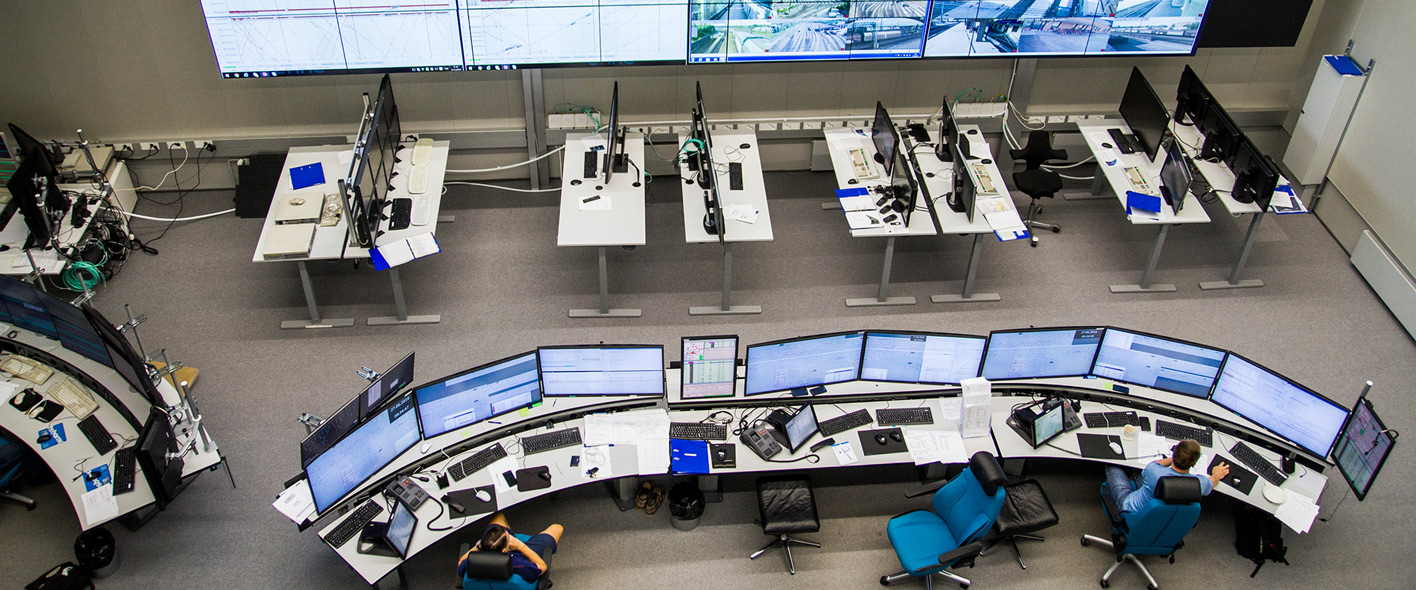
Centralised, computer based traffic management system
Mipro’s highly scalable and modular traffic management system ensures reliable and efficient rail traffic flow in all situations. It integrates seamlessly to various types of interlocking systems and provides a unified operational environment, data transmission connections and interfaces for their control.
DYNAMIC CONTROL ENVIRONMENT TO ENHANCE DISPATCHERS’ DAILY WORK
Traffic controllers must manage even larger amounts of data in their work as areas to be controlled have become wider. Today a traffic controller’s work also requires constant attention and interaction with rail maintenance supervisors, train drivers and shunting work personnel. Consequently, they have to be able to notice abnormal situations and elements immediately and react to them without delay.
Mipro’s traffic management system takes the challenges involved in traffic controllers’ work into account: it has been designed in co-operation with traffic controllers.
FEATURES
Modular system architecture
Easy integration and adaptation to the existing infrastructure
High availability and constant system development
Ease of use
Unified, user-friendly operations

MIPRO’S SOLUTIONS CAN BE INTEGRATED WITH OTHER SYSTEMS, WITHOUT ANY COMPATIBILITY PROBLEMS.
MODULAR SYSTEM ARCHITECTURE
Thanks to the modular system architecture, Mipro’s traffic management system is suitable for both small and large system installations, from a single stand-alone workplace to a fully-integrated control centre. You can build the system in stages and extend its scope and features at any life-cycle stage.
EASY INTEGRATION AND ADAPTATION
The system connects seamlessly with existing systems, processes and equipment. It uses standard data transmission networks to fetch and convey data and integrates seamlessly to interlocking systems implemented with different techniques, both relay and computer based, and originating from different ages.
HIGH AVAILABILITY AND CONSTANT SYSTEM DEVELOPMENT
The system platform is based on field-proven hardware components and software, which guarantees constant and cost-effective system development.
CENTRAL, REMOTE OR LOCAL CONTROL FOR EFFICIENCY
Mipro’s system can be controlled centrally from a traffic control centre or via remote control sites. Thanks to the flexible configuration, operation can be centralised in one traffic control centre or distributed throughout a geographically wide area.
CLEAR AND USER-FRIENDLY TRAFFIC VISUALISATION
The system can be operated via a unified user interface regardless of the interlocking system. The user interface includes several display levels from detailed dispatching views to high-level network situation overviews.
User experience
Automatic functions
Simulator

MODERNISATION OF WESTERN FINLAND’S REMOTE CONTROL,
2014-2019
The operating area under the TAKO traffic management system includes over 10 000 elements to be controlled and monitored; for example 1900 signals and 1250 points. The area covers about 1400 track kilometres.
WEST METRO INTERLOCKING SYSTEM PROJECT 2015-2017
Mipro has installed, among other things nine SIL4-level interlocking systems and 174 signals for the control of West Metro.

